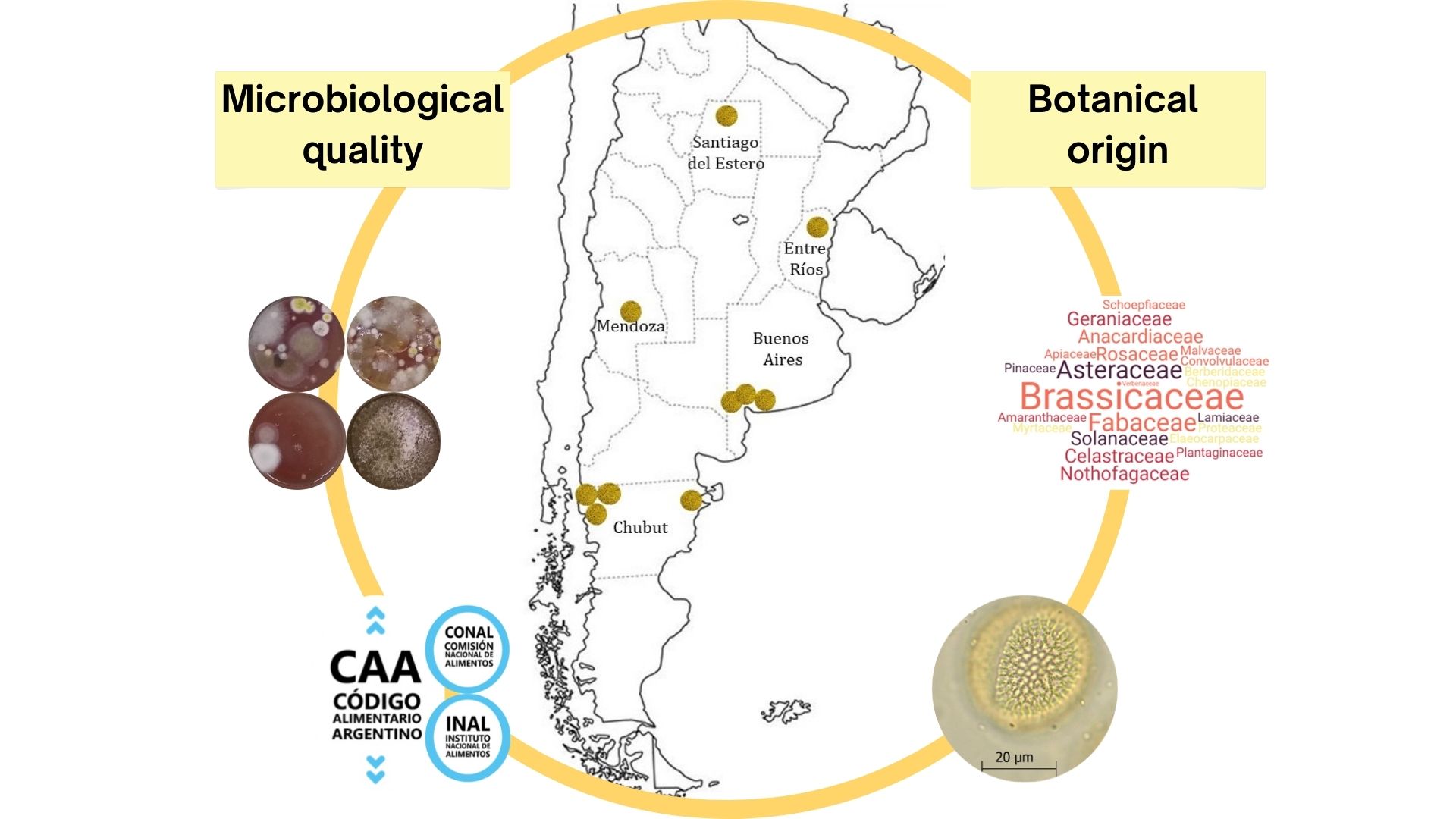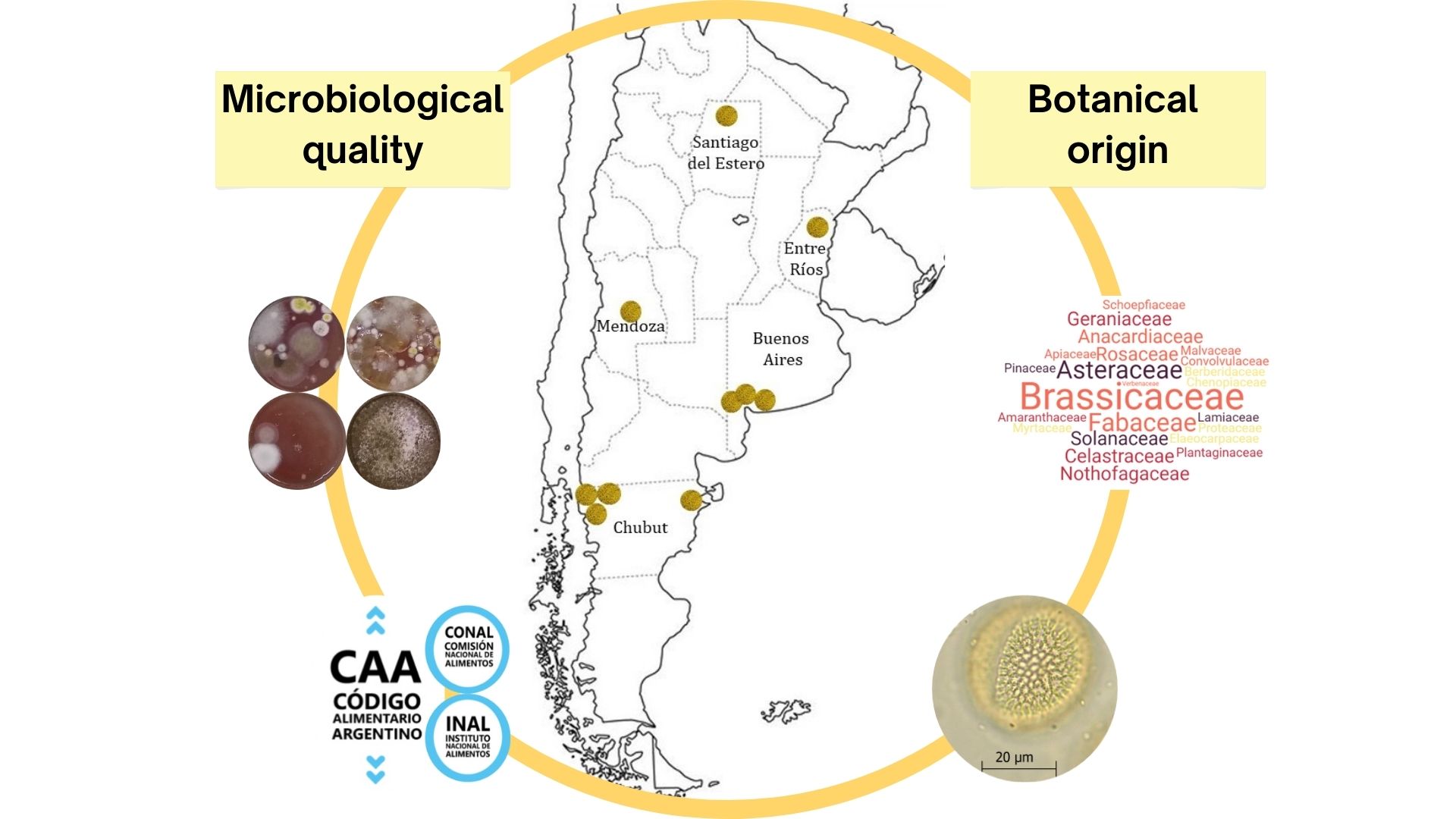Characterization of Argentine commercial bee pollen intended for human consumption
DOI:
https://doi.org/10.48162/rev.39.106Keywords:
Apis mellifera, Argentina, bee pollen, microbiological quality, botanical originAbstract

Bee pollen is consumed as a dietary supplement. Its quality parameters are regulated by the Argentine Food Code (AFCode). The present study characterized 10 commercial dehydrated samples from five Argentine provinces to provide information on hygienic quality and health safety. We assessed their microbiological quality, including potential mycotoxins. We also determined their botanical origin and moisture. Results showed that seven out of ten samples presented lower counts of culturable heterotrophic mesophilic bacteria than those allowed by the AFCode. In contrast, all samples showed higher filamentous fungi and yeast counts than the level approved by the AFCode. No fumonisin or deoxynivalenol was detected; we observed only aflatoxin B2 in one sample and ochratoxin A in two. The results of the botanical origin of samples showed that all samples had a predominant pollen type, except one. The microbiological quality of all samples agreed with that required by the AFCode, except filamentous fungi and yeasts. In addition, we found variations among samples from the same province. Therefore, if pollen is intended for human consumption, appropriate hygiene standards must be applied to all bee pollen production operations.
Highlights:
- The microbiological quality of bee pollen samples, regardless of the province or botanical origin, agreed with the requirements of the AFCode, except for filamentous fungus and yeast.
- All samples showed filamentous fungus and yeast counts higher than the permitted level in the AFCode.
- Mycotoxin levels found in bee pollen were far from the limits allowed in humans (10 µg.kg-1) by regulations for other foods.
- All samples analyzed were pollen mixes verified by identifying numerous botanical species.
- The characterization of Argentinian commercial bee pollen showed that it was suitable for human consumption.
Downloads

Downloads
Published
How to Cite
Issue
Section
License
Copyright (c) 2018 Revista de la Facultad de Ciencias Agrarias UNCuyo

This work is licensed under a Creative Commons Attribution-NonCommercial-ShareAlike 3.0 Unported License.
Aquellos autores/as que tengan publicaciones con esta revista, aceptan las Políticas Editoriales.










.jpg)




